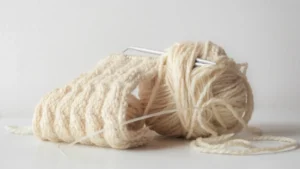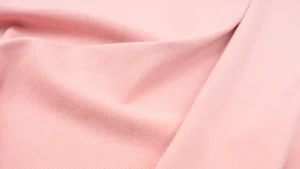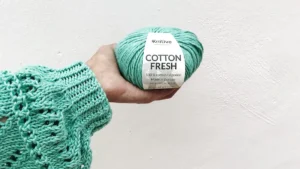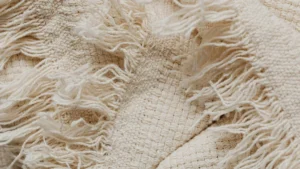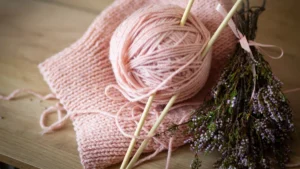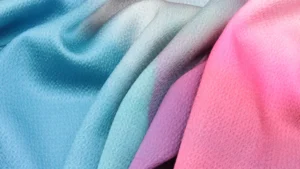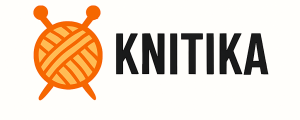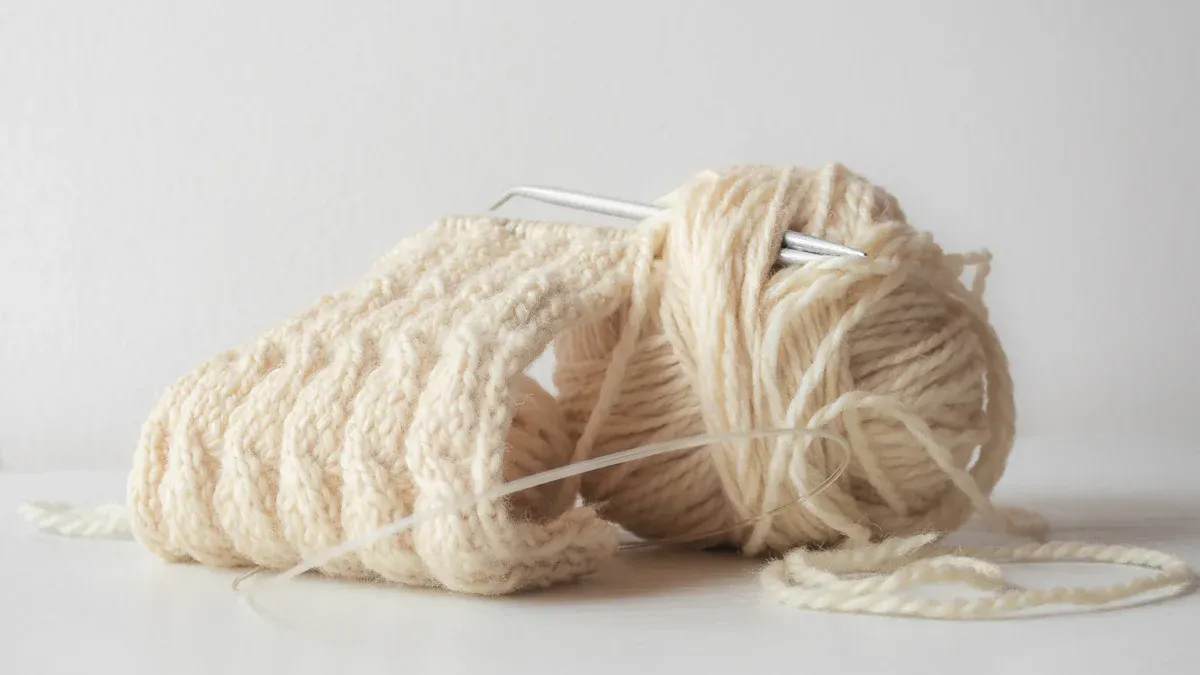
When you ask what is brioche in knitting, it is a technique that creates thick, soft fabric. This fabric feels stretchy and cozy, perfect for warmth. Brioche is unique because you knit each row twice, which makes the fabric warmer and softer than regular knitting. The result is a ribbed texture that stands out and looks different. Brioche is ideal for projects that need extra warmth, like scarves, hats, and slippers during winter. If you’re new to brioche, learning what is brioche in knitting will be enjoyable and rewarding, as it’s both fun and produces great results.
Key Takeaways
Brioche knitting makes fabric that is thick, soft, and stretchy. It has a special ribbed look and feels warm and cozy. This method uses slipped stitches and yarn overs together. This makes the fabric double-thick and you can use both sides. Brioche fabric is thicker and stretchier than normal knitting. It is great for scarves, hats, and blankets that need to be warm. Beginners should practice on small pieces first. They should use locking stitch markers and have extra yarn ready. This helps them learn the rhythm and tension. You can knit brioche with one color or two colors. Two-color brioche makes bold patterns you can see on both sides. It is harder to do and needs more skill.
What Is Brioche in Knitting
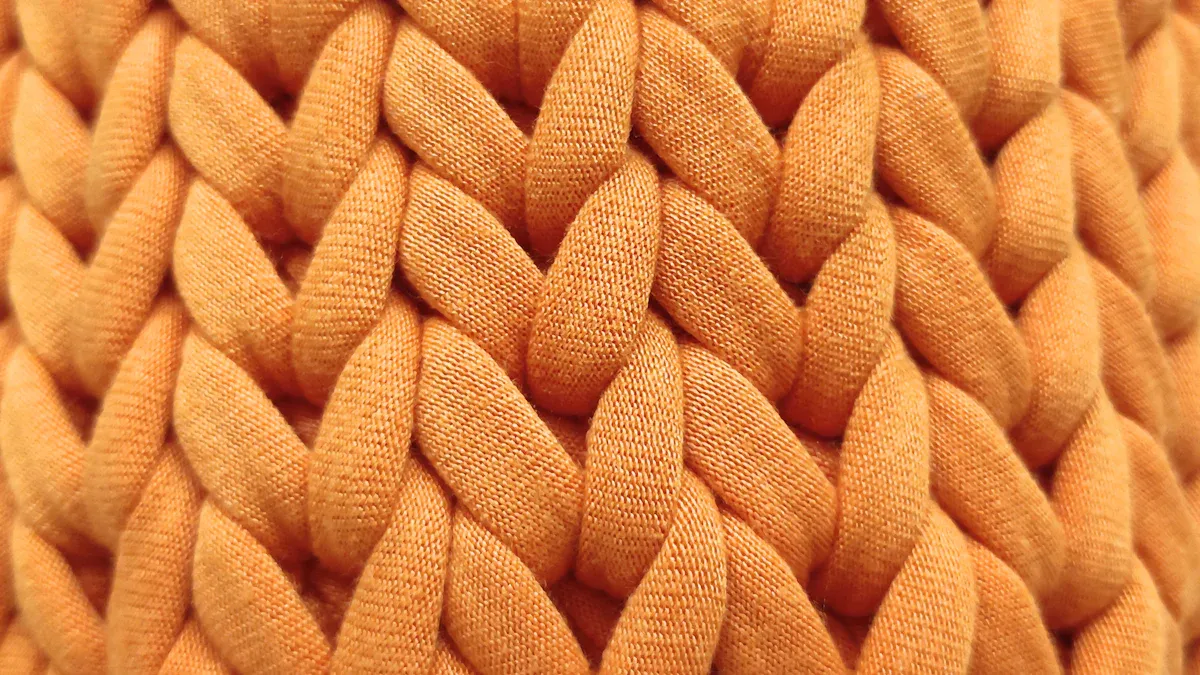
Brioche Stitch Basics
When you want to know what is brioche in knitting, you need to look at how the stitches work together. Brioche knitting uses a special family of patterns called tuck stitches. You create these by slipping stitches and adding yarn overs. Then, you knit the slipped stitch and its yarn over together on the next row. This method forms a double-thick fabric that looks like arches or fish scales. Nancy Marchant, a well-known expert, calls the main stitches the brioche-knit stitch (brk) and the brioche-purl stitch (brp). You will often see these terms in patterns.
The core characteristics of brioche include a ribbed, lofty, and squishy texture. The fabric feels soft and stretchy. You can see deep vertical ribs on both sides, which makes the fabric reversible. The unique structure comes from combining yarn overs with slipped stitches. This creates a thick, plush, and cushioned fabric. The fabric stretches easily, so you need to use a stretchy cast-on and bind-off.
Tip: Practice the basic steps before starting a big project. Try making a small swatch to get used to the rhythm of slipping stitches and adding yarn overs.
Here is a simple breakdown of how you form a basic brioche stitch:
Work a set-up row: knit one, yarn over, slip one stitch purlwise, and repeat.
For the main row, alternate between knitting the slipped stitch and its yarn over together (brk), then yarn over and slip the next stitch purlwise.
Repeat the main row until your piece is the right length.
Bind off with a stretchy method.
You will notice that brioche knitting requires two passes to finish one row. You only knit half the stitches each time, while the others are slipped. This is what gives the fabric its thick and cozy feel.
Brioche vs. Regular Knitting
You might wonder how brioche compares to regular knitting. The main difference is in the fabric’s thickness and stretch. Brioche knitting creates a much thicker and more elastic fabric than standard ribbing. The paired yarn overs and slipped stitches form a double structure, making the fabric feel doughy and soft. Regular ribbing, like knit 1, purl 1, feels thinner and less stretchy.
Here are some key differences:
Brioche knitting produces a denser, thicker fabric.
The yarn overs add extra stretch, so the fabric feels more flexible.
You need to plan for the extra width and stretch when you choose your project size.
Brioche and fisherman’s rib look similar, but they are not the same. Both create a squishy, ribbed fabric. Fisherman’s rib uses a simpler method, knitting into the stitch below. Brioche uses yarn overs and decreases, which makes the fabric lighter, airier, and even thicker. Fisherman’s rib is faster and easier to knit, but brioche gives you more texture and options, especially if you want to use two colors.
Aspect | Brioche Stitch | Fisherman’s Rib |
|---|---|---|
Uses yarn overs and knit togethers (decreases) | Knits into the stitch below | |
Fabric Characteristics | Lighter, airier, thicker, unique texture | Thick, stretchy, squishy |
Complexity | More complex, new terms and techniques | Simpler, faster |
Appearance | Looser, more texture, great with two colors | Similar ribbed look, can substitute brioche |
Difficulty to Undo | Harder to unravel, lifelines recommended | Easier to unravel |
Stretch Behavior | Stretches width-wise, plan for finished size | Also stretches width-wise, similar planning needed |
When you ask what is brioche in knitting, you find a technique that stands out for its texture and warmth. Brioche knitting lets you create projects that are both beautiful and practical. You can use it for scarves, hats, and blankets that need extra softness and stretch. If you want to try something new, learning brioche will give you a fun and rewarding challenge.
Brioche Knitting Techniques
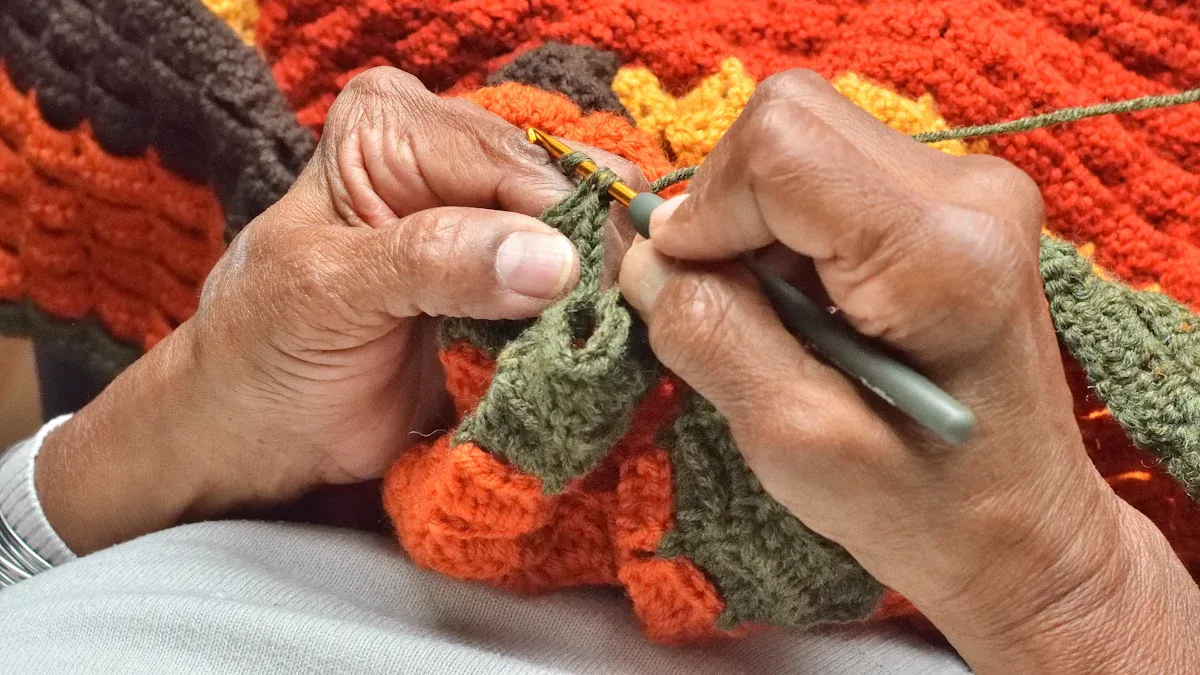
Basic Stitches
When you start with brioche, you use a special set of stitches that work together to create a thick, ribbed fabric. Unlike regular knitting, which uses only knit and purl stitches, brioche knitting combines slipping stitches, making yarn overs, and then knitting or purling two stitches together. You will often see the terms brioche-knit stitch and brioche-purl stitch in patterns. The brioche-knit stitch (brk) means you knit the slipped stitch and its yarn over together. The brioche-purl stitch (brp) means you purl the slipped stitch and its yarn over together.
Here is a simple way to think about the process:
Slip a stitch purlwise.
Make a yarn over.
On the next row, knit or purl the slipped stitch and yarn over together.
This method creates a ribbed, reversible fabric that feels much thicker and stretchier than standard knitting. You will notice that the fabric looks and feels different from anything you make with just knit and purl stitches.
Tip: Practice these basic steps on a small swatch before you start a larger project. This helps you get used to the rhythm of brioche.
Yarn Overs and Slipped Stitches
Yarn overs and slipped stitches are the heart of brioche. When you slip a stitch purlwise, you do not knit it. Instead, you move it to the other needle without changing its direction. Right after you slip the stitch, you make a yarn over. This yarn over sits on top of the slipped stitch and forms a pair. On the next row, you work these two stitches together as one.
This pairing creates a loop that acts like an extra stitch. The slipped stitch forms a horizontal bar, and the yarn over turns this bar into a loop. When you knit or purl the pair together, you lock the yarn over in place. This process gives brioche its signature lofty, squishy texture. The fabric stretches easily and feels soft and thick. You will also see a unique pattern that looks like half-drop diamonds or arches.
Note: The yarn overs in brioche are not just for decoration. They help build the height and stretch of the fabric, making it stand out from regular ribbing.
One-Color and Two-Color Brioche
You can knit brioche with one color or two colors. Each method creates a different look and feel. One-color brioche uses a single yarn throughout the project. This creates a thick, dense, and reversible fabric with deep ribs. The pattern stands out and feels more intricate and dense than other rib stitches.
Two-color brioche adds another layer of interest. You use two different yarns, switching between them on each row. This creates a double-layered fabric. One color shows on the front, and the other color shows on the back. The result is a reversible project with bold, alternating colors on each side. Two-color brioche makes the texture and pattern even more dramatic.
Feature | One-Color Brioche | Two-Color Brioche |
|---|---|---|
Yarn Used | One color | Two contrasting colors |
Fabric Look | Deep, pronounced ribs | Reversible, colorful ribs |
Complexity | Easier to learn | |
Visual Texture | Subtle, classic | Bold, high-contrast |
Two-color brioche requires you to manage two yarns at once. You may need to slide your work on the needle instead of turning it at the end of a row. This technique lets you create patterns like the checked rose stitch, which looks fluffy and thick with intricate colorwork. You will find that two-color brioche offers more options for creative designs, but it also takes more practice to master.
Tip: If you are new to brioche, start with one color. Once you feel comfortable, try two-color brioche for more visual impact and fun.
Brioche Projects and Fabric
Common Uses
You can use brioche for many cozy projects. This stitch works best for items that need warmth and softness. Many knitters choose brioche for scarves, hats, cowls, and blankets. The deep ribs and plush texture make these accessories extra comfortable in cold weather. You might want to try a basic brioche scarf or an easy brioche scarf as your first project. These projects help you practice the stitch and enjoy the thick, squishy fabric. Brioche also looks beautiful in shawls and wraps, especially when you want both sides to look nice.
Fabric Qualities
Brioche fabric stands out from other knitting techniques. The stitch creates a warm, squishy, and drapey fabric. You will notice that the deep, plush ribs trap warm air, making the fabric feel lofty and soft. Brioche fabric is completely reversible, so both sides look great. The double-layered structure gives you warmth and thickness without making your project feel heavy. The enmeshed construction holds heat well, which is perfect for winter accessories. You will also find that brioche fabric stretches and bounces back, adding comfort and coziness.
Brioche fabric feels unique because it combines warmth, drape, and stretch. You get a fabric that stands out from regular ribbing or other stitches.
Tips for Beginners
If you are new to brioche, you may face some challenges. Many beginners find it tricky to keep track of the stitch structure. You might see a slipped stitch with a yarn over and think it counts as two stitches, but it is only one. Brioche knitting uses more yarn than regular knitting, so prepare extra yarn before you start. Consistent tension is important because the fabric stretches easily. You should practice brioche knit and purl stitches on a small swatch before starting a bigger project. Using locking stitch markers helps you keep your place, since regular markers can slip off. Try using a loose cast-on and bind-off, maybe with a larger needle, to match the fabric’s stretch.
Practice on a small swatch before starting a full project.
Use locking stitch markers to keep track of your place.
Prepare extra yarn for your project.
Focus on keeping your tension even.
Start with a simple project like an easy brioche scarf.
Brioche for beginners can feel confusing at first, but with practice, you will enjoy the unique texture and warmth this stitch brings to your knitting.
Brioche Terminology
Key Terms
When you start learning brioche, you will see some new words and abbreviations in patterns. These terms help you understand how to make the unique stitches that give brioche its thick, ribbed look. Knowing these words makes it easier to follow instructions and avoid mistakes.
Here are some of the most important terms you will see:
Abbreviation | What It Means |
|---|---|
brk | Brioche knit: Knit the stitch together with its yarn over. |
brp | Brioche purl: Purl the stitch together with its yarn over. |
sl1yo | Slip one yarn over: Slip a stitch purlwise with yarn in front, then yarn over. |
brk2tog | Brioche knit two together: Knit two stitches and their yarn overs together. |
brssk | Slip, slip, brioche knit: Slip two stitches, then brioche knit them together. |
You will often see “sl1yo” in patterns. This means you slip one stitch purlwise with the yarn in front, then bring the yarn over the needle. This action creates a pair: a slipped stitch and a yarn over. On the next row, you work these two together using brk or brp. Keeping track of these pairs is important for getting the right texture.
Tip: Always check if you are working with a paired stitch (a slipped stitch and a yarn over) before you knit or purl it. This helps you avoid mistakes and keeps your fabric even.
Reading Brioche Patterns
Reading brioche patterns can feel different from reading regular knitting patterns. You will see special abbreviations and instructions that tell you how to work with paired stitches. Patterns may use charts or written steps. Each symbol or word tells you what to do with the stitch and its yarn over.
Many patterns use abbreviations like brk, brp, and sl1yo. Some patterns also include increases and decreases, such as brk2tog or brssk. You should always read the pattern notes before you start. These notes explain the special stitches and how to read the chart or instructions.
If you want to learn more, you can find helpful resources online. Jodie Morgan’s “Knit Like Granny” website offers clear tutorials, pattern lists, and videos for beginners. You can also look for beginner-friendly projects, such as the Caen Cowl or Mason Street Scarf, which use simple brioche stitches and help you practice reading patterns.
If you get stuck, look for video tutorials or join a knitting group. Many knitters share tips and answer questions about reading brioche patterns.
Brioche knitting gives you a thick, soft, and stretchy fabric with beautiful ribbing. You can use it for scarves, hats, and cowls because it feels cozy and looks great on both sides.
Try a simple project like a scarf or cowl to practice the basic stitches.
Build your skills by working on swatches and using stitch markers.
For more help, check out Lavanya Patricella’s book or free tutorials from Purl Soho and Knit Graffiti. You will find step-by-step guides and patterns to support your learning.
FAQ
What yarn works best for brioche knitting?
You get the best results with smooth, worsted-weight yarn. Avoid fuzzy or textured yarns. These can hide your stitches and make it hard to see the pattern. Solid or lightly variegated colors help you spot mistakes and enjoy the texture.
Why does my brioche fabric look loose or uneven?
Brioche stitches stretch more than regular knitting. You may need to use smaller needles or adjust your tension. Practice on a small swatch. This helps you find the right feel and keeps your fabric even.
Can I fix mistakes in brioche knitting easily?
Fixing mistakes in brioche can be tricky. You work with paired stitches, so unraveling takes care. Use lifelines every few rows. These help you rip back safely if you spot an error.
How do I count rows in brioche knitting?
Look for the arches or “V” shapes in the ribbing. Each arch counts as one row. You can use a row counter or mark your progress with a stitch marker. This keeps your project on track.



